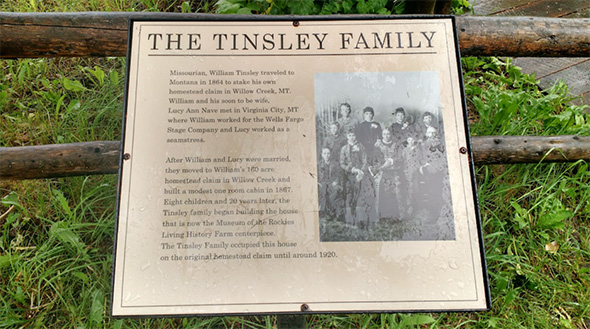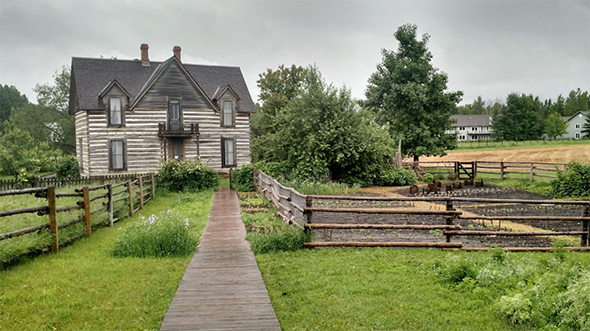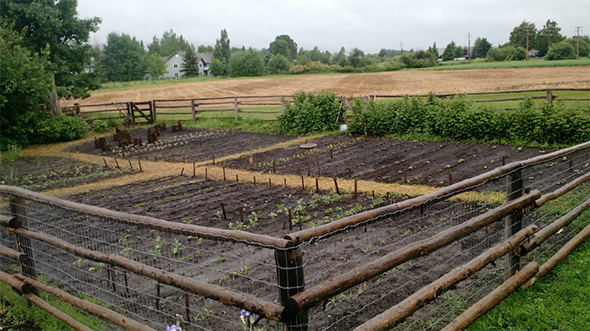
There’s a model pioneer era farm next to the Museum of the Rockies in Bozeman, Montana that fascinates me. The farm buildings were originally constructed in the town of Willow Creek forty miles away beginning in 1889. The structures were carefully moved to the museum grounds and opened to the public on its centenary in 1989. The museum has various goals for its Living History program that include maintaining a historically authentic homestead and encouraging visitors to become more involved in agriculture themselves. Programs are offered in modern urban homesteading, raising chickens, Dutch oven cooking, vegetable gardening, bee keeping, blacksmithing, and so on.



Both William Tinsley and his future wife Lucy were from Missouri families that had migrated west in large part to escape the difficulties associated with the Civil War. As a bachelor Mr. Tinsley scouted out a 120 acre claim in the Montana Territory using the Homestead Act of 1862 which had been signed into law by Abraham Lincoln. Newly married, the couple began farming in 1889, the year Montana became a state. After five years they had fulfilled their requirements by building a house and cultivating the land. At that point the federal government granted them free title to the property.
As I toured the farm I had to balance my romantic sentiments with what life on the frontier was really like. If the Tinsleys wanted vegetables they needed to grow them themselves. If they wanted apple pies, apple sauce, and apple cider in December they needed to preserve the apples in the fall and set sufficient quantities aside in the root cellar. If they wanted eggs, milk, butter, and meat they needed to raise the animals themselves and process them accordingly.

Water came from a shallow well they had to dig themselves. Then they needed to carry that water by hand from the well into the house. A “dry” sink of simple pitchers and wash basins got the job done. Dirty water was carried outdoors for disposal. Laundry was all done by hand and hung to dry. An outhouse was still the standard of the day.
Read the rest of this piece on Granola Shotgun.
Johnny Sanphillippo is an amateur architecture buff with a passionate interest in where and how we all live and occupy the landscape, from small rural towns to skyscrapers and everything in between. He travels often, conducts interviews with people of interest, and gathers photos and video of places worth talking about (which he often shares on Strong Towns). Johnny writes for Strong Towns, and his blog, Granola Shotgun.












